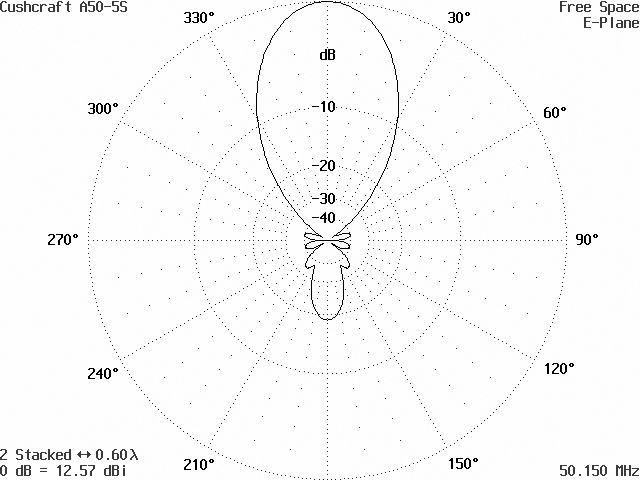
Yagis split to cover more azimuth
| Cushcraft Long Boom (15' 3") 4 element yagi | ||||||||||||||
| # | Element Position | Total Element Length | Length - 3/4" tube (fixed) | Length - 5/8" tube (each end) | ||||||||||
| Reflector | 0 | 57.33 | 24 | 34.22 | ||||||||||
| DE | 58.192 | 54.137 | 24 | 31.013 | ||||||||||
| Director 1 | 118.874 | 52.630 | 24 | 29.5 | ||||||||||
| Director 2 | 182.703 | 51.977 | 24 | 28.842 | ||||||||||
| 2 yagi stacking distance/info (4 over 4 stack) | ||||||||||||||
| 10.7 dBi for one yagi with a 50 degree 3 dB beamwidth | ||||||||||||||
| 1/2 wavelength apart is 117.8" for 12.05 dBi gain | ||||||||||||||
| 5/8 wavelength apart is 141.4" for 12.42 dBi gain | ||||||||||||||

